Lead
Lead is a chemical element with the symbol Pb (from the Latin plumbum) and atomic number 82. It is a heavy metal that is known for its toxicity to humans and other organisms. In high school biology, it is important to understand the effects of lead exposure on living organisms and the environment.
Properties of Lead
Lead is a soft, malleable metal with a bluish-white color when freshly cut. It has a low melting point and is resistant to corrosion. Due to its toxic properties, lead has been phased out of many consumer products, such as gasoline, paint, and plumbing materials.
Effects of Lead Exposure
Exposure to lead can have serious health effects on humans and animals. In humans, lead poisoning can lead to neurological and developmental issues, particularly in children. Lead exposure can also affect the reproductive system, kidneys, and cardiovascular system.
Environmental Impact
Lead pollution can have detrimental effects on the environment. It can contaminate soil, water, and air, posing a risk to plants, animals, and ecosystems. Lead pollution can also bioaccumulate in food chains, leading to potential harm to organisms higher up the food chain, including humans.
Regulation and Mitigation
Due to its toxicity, lead is heavily regulated in many countries. Efforts to mitigate lead exposure include the removal of lead-based paint, the use of alternative materials in plumbing and construction, and the development of lead-free products.
Study Guide
- Explain the properties of lead and its uses in industrial and consumer products.
- Discuss the health effects of lead exposure on humans, particularly children.
- Describe the environmental impact of lead pollution and its effects on ecosystems.
- Examine the regulations and mitigation strategies for reducing lead exposure in the environment.
[Lead] Related Worksheets and Study Guides:
.◂Biology Worksheets and Study Guides High School. Nucleic acids and protein synthesis
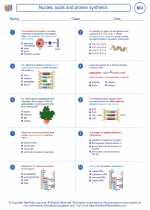
 Worksheet/Answer key
Worksheet/Answer key
 Worksheet/Answer key
Worksheet/Answer key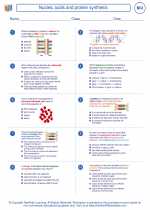
 Worksheet/Answer key
Worksheet/Answer key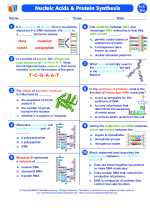
 Vocabulary/Answer key
Vocabulary/Answer key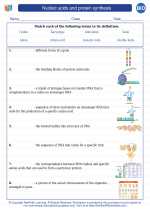
 Vocabulary/Answer key
Vocabulary/Answer key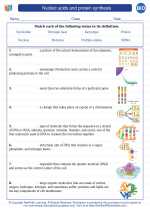
 Vocabulary/Answer key
Vocabulary/Answer key
